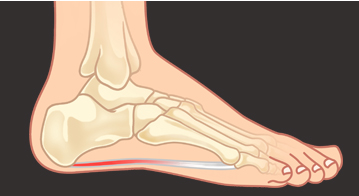
What is plantar fascia?
The plantar fascia is a long, thin ligament that lies directly beneath the skin on the bottom of your foot. It connects the heel to the front of your foot and supports the arch of your foot.
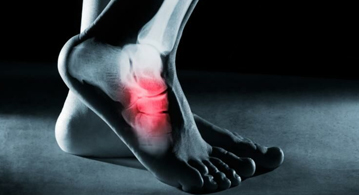
Plantar fasciitis (heel spur syndrome)
Plantar fasciitis is an inflammation of the band of tissue (the plantar fascia) that extends from the heel to the toes. In this condition, the fascia first becomes irritated and then inflamed, resulting in heel pain.
Heel pain can be a debilitating painful foot pathology that can be effectively treated using a combination of available therapies. Your podiatrist will assess the best treatment pathway for you once the underlying cause has been identified.

Causes
- Tight calf muscle
- Faulty foot biomechanics – people who have problems with their arches, either overly flat feet or high-arched feet, are more prone to developing plantar fasciitis.
- Wearing non-supportive footwear
- Obesity
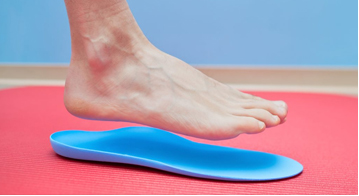
Symptoms
- Pain on the bottom of the foot near the heel
- Pain with the first few steps after getting out of bed in the morning, or after a long period of rest, such as after a long car ride. The pain subsides after a few minutes of walking
- Greater pain after (not during) exercise or activity
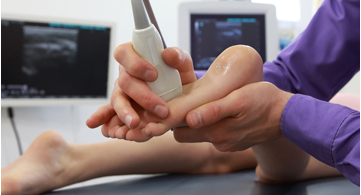
Diagnosis
- Clinical Presentation and Examination
- Imagings – Xray, Ultrasound, MRI may be used to distinguish different types of heel pain
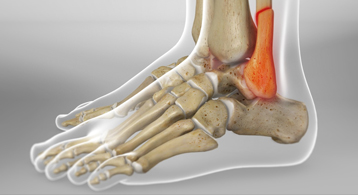
Conservative Treatments
- Stretching exercises. Exercises that stretch out the calf muscles help ease pain and assist with recovery.
- Avoid going barefoot. When you walk without shoes, you put undue strain and stress on your plantar fascia.
- Orthotics. If there is underlying faulty foot biomechanics, functional orthoses are prescribed for treatment as well as preventative purposes.
- Ice. Putting an ice pack on your heel for 20 minutes several times a day helps reduce inflammation. Place a thin towel between the ice and your heel; do not apply ice directly to the skin.
- RPW Shockwave Therapy. Generally between 3-5 sessions required.
- Limit activities. Cut down on extended physical activities to give your heel a rest.
- Shoe modifications. Wearing supportive shoes that have good arch support and a slightly raised heel reduces stress on the plantar fascia.
- Medications. Oral nonsteroidal anti-inflammatory drugs (NSAIDs), such as ibuprofen, may be recommended to reduce pain and inflammation.
- Padding and strapping. Placing pads in the shoe softens the impact of walking. Strapping helps support the foot and reduce strain on the fascia.
- Injection therapy. In some cases, corticosteroid injections are used to help reduce inflammation and relieve pain.
- Removable walking cast. A removable walking cast may be used to keep your foot immobile for a few weeks to allow it to rest and heal.
- Physical therapy. Exercises and other physical therapy measures may be used to help provide relief.

Surgical Treatments
Although most patients with plantar fasciitis respond to non-surgical treatment, a small percentage of patients may require surgery. If, after several months of non-surgical treatment, you continue to have heel pain, surgery will be considered. Dr. Timmins will discuss the surgical options with you and determine which approach would be most beneficial for you.


